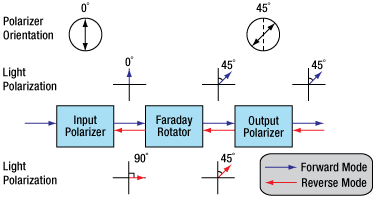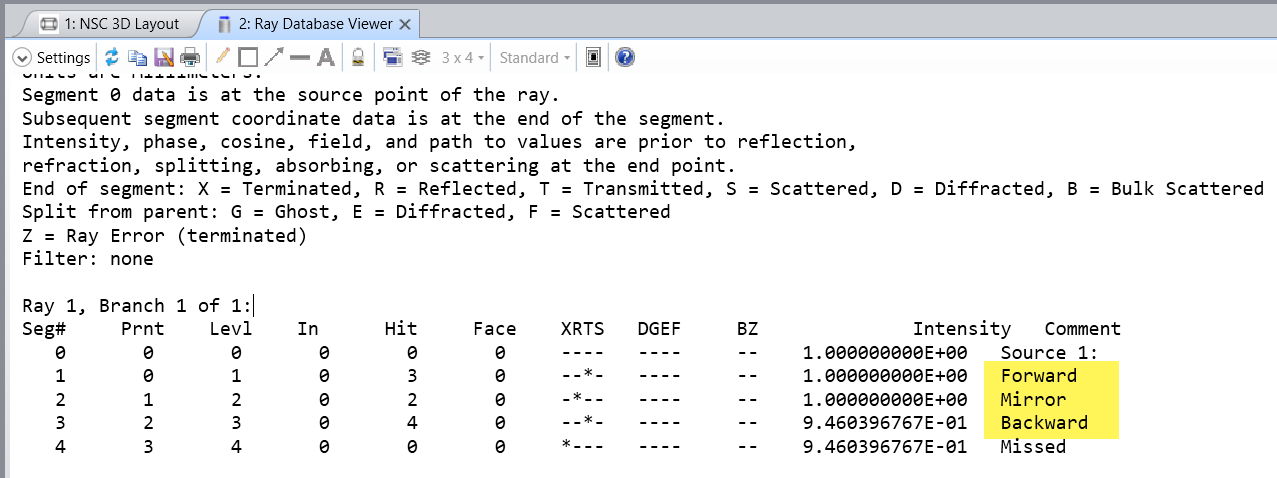Faraday rotators are polarization rotators. The state of polarization (such as the axis of linear polarization or the orientation of elliptical polarization) is rotated as the wave traverses the device (link). The tricky thing when modeling Faraday rotators is the apparent non-reciprocal optical propagation. The ray back through the rotator does not undo the rotation of the first pass, but instead adds to it.

This can be modelled with Jones Matrices and the Consider Objects type rule, so that light going one way sees one JM, and light going the other sees the other. I have set up an example attached that shows how it can be done (seq and non seq).
In non-sequential, the optical set-up is like this:
Source Ray --> Jones Matrix (Forward and Backward) --> Rectangle (MIRROR)
The source only considers the Forward Jones Matrix when sending light. When light is reflected on the rectangle, the Rectangle only consider the backward Jones Matrix.



This can be checked in the Ray Database Viewer:



